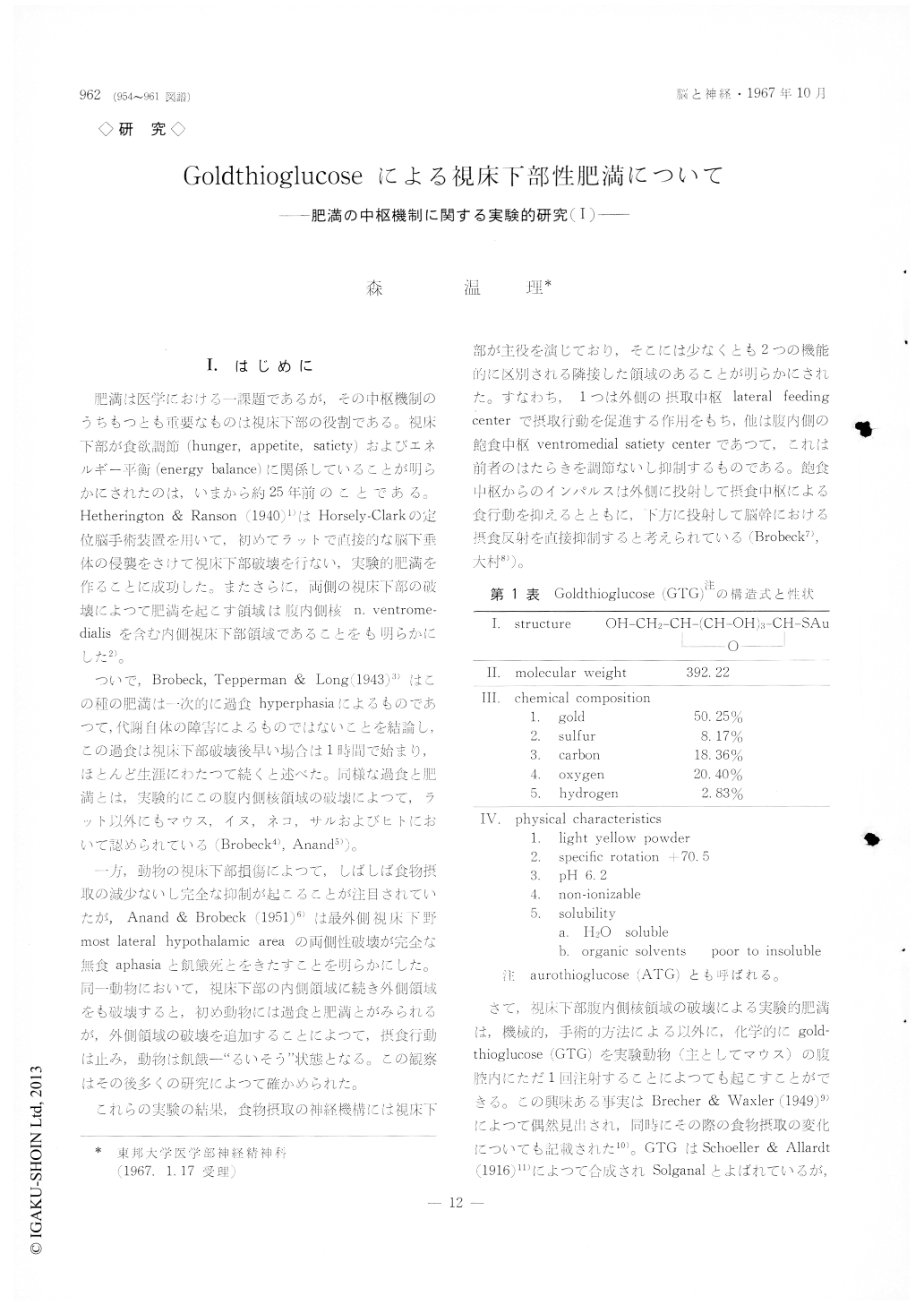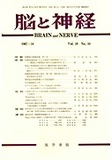Japanese
English
- 有料閲覧
- Abstract 文献概要
- 1ページ目 Look Inside
I.はじめに
肥満は医学における一課題であるが,その中枢機制のうちもっとも重要なものは視床下部の役割である。視床下部が食欲調節(hunger, appetite, Satiety)お,よびエネルギー平衡(energy balance)に関係していることが明らかにされたのは,いまから約25年前のことである。Hetherington & Ranson (1940)1)はHorsely-Clarkの定位脳手術装置を用いて,初めてラットで直接的な脳下垂体の侵襲をさけて視床下部破壊を行ない,実験的肥満を作ることに成功した。またさらに,両側の視床下部の破壊によつて肥満を起こす領域は腹内側核n.ventrome—dialisを含む内側視床下部領域であることをも明らかにした2)
ついで,Brobeck, Tepperman & Long (1943)3)はこの種の肥満は一次的に過食hyperphasiaによるものであつて,代謝自体の障害によるものではないことを結論し,この過食は視床下部破壊後早い場合は1時間で始まり,ほとんど生涯にわたつて続くと述べた。同様な過食と肥満とは,実験的にこの腹内側核領域の破壊によつて,ラット以外にもマウス,イヌ,ネコ,サルおよびヒトにおいて認められている(Brobeck4), Anand5))。
Inbread CBA female mice (80-90 days old of age, 19-22 g. of body weight) were parenterally given a dose of 0.4 mg/g/b. w. of goldthioglucose (GTG) that results in obesity. Studies of food intake in 8 mice treated with GTG showed 40-50% increase in foodconsumption for about 4 weeks (from the second to the fifth week after treatment). The accompanying slight increase in water intake was seen during the above-mentioned periods. The GTG-treated mice showed 94% of weight gain 13 weeks after treatment and it was in marked contrast to that of the controls.
Histological studies on the brains of 6 GTG-treated mice showed the bilateral damage in the ventromedial "satiety center" of hypothalamus and also, in the preoptic region, medula oblongata, doral hippocampus, dentate gyrus, fornix and septum.
These results show that GTG is a good experi-mental tool for the studies on the hypothalamic obe-sity or the neural control of obesity.

Copyright © 1967, Igaku-Shoin Ltd. All rights reserved.


